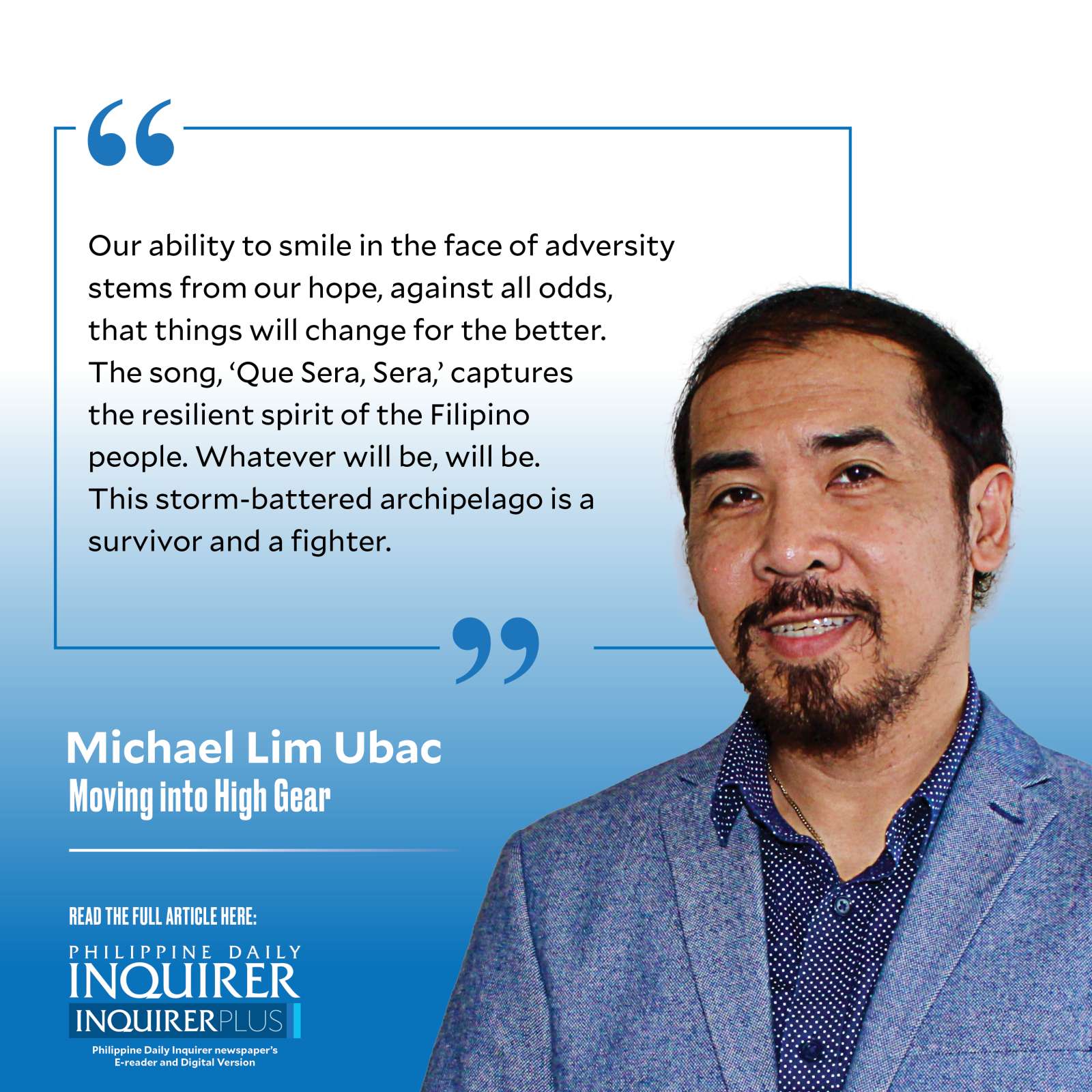Happiness in the midst of adversity

The Philippines is finally becoming one of the world’s happiest countries, and I’m happy about it.
In the 2024 World Happiness Report, the Philippines jumped 23 spots and came in at 53rd place. More elating is the country’s ranking as the second happiest country in Southeast Asia after Singapore (30th spot). The Philippines was 76th in 2023 and 60th in 2022. The annual report (https://tinyurl.com/bdf3tnh3) was released on March 20 to mark the United Nations International Day of Happiness.
For the seventh year in a row, Finland remains the happiest country in the world. It ranks first, followed closely by other Nordic countries Denmark, Iceland, Sweden, and Norway, which rank second, third, fourth, and seventh, respectively. Israel is ranked fifth, the Netherlands is sixth, and Luxembourg, Switzerland, and Australia are the final three countries to reach the top 10. Afghanistan is still ranked last (143rd) as the loneliest country.
The report says that the United States and Germany are becoming lonelier: from 15th and 16th last year to 23rd and 24th, respectively, this year. Six factors are included in survey respondents’ life evaluations to determine how happy people are: social support, income, health, freedom, generosity, and absence of corruption.
It’s no surprise that we’re among the happiest people on the planet. Although we face difficulties, we still love eating out with our family and friends, singing our hearts out, lounging on the beach, trekking in the mountains, and watching telenovelas (and K-drama) with relish.
We find humor in everything. The viral meme, “Balutin mo ako,” which involves Filipinos (especially our aunts) taking home leftovers from a party, shows how happy Filipinos are (especially when there is food around). The “It’s all coming back to me” challenge involves singers queuing up to sing parts of the song and the “birit” challenge (belting out sustained high notes while singing) among mall shoppers also attest to our happy vibe.
Structural conditions. What was the source of Filipino optimism during the survey period? The World Happiness Report relies on a three-year average (in this case, 2021-2023), and thus, one recent event quickly comes to mind: the 2022 elections. It was the changing of the guard that ended the nightmarish handling of the COVID-19 pandemic by the previous administration.
Why did Filipinos become happier even though their economic and social conditions have not changed structurally over the last three years? Traffic gridlocks in Metro Manila and urban centers hamper productivity; the education sector is a mess; prices of oil, goods, and services remain elevated; many government biddings are rigged; the justice system grinds exceedingly slow, and jails are suffocatingly congested.
We have a flawed democracy, supported by patronage politics and marred by corruption that has reached epidemic proportions. Our agricultural sector is less developed than our neighboring countries. Over a century after Jose Rizal penned “Filipinas dentro de cien años” (“The Philippines a Century Hence”), we are still exporting raw materials instead of turning them into high-value commodities for export. Exporting cheap labor remains a government policy, too.
Instead of building industries that harness our technological strengths, we have an endless array of expensive high-rise development projects that turn our farmers and fisherfolk into construction workers, compromising the food security of the nation. Thus, we have to import basic goods such as onions, rice, wheat, corn, meat, fruits, vegetables, and even fish (galunggong) at one point.
Nonetheless, Filipinos can still smile at the drop of a hat. There’s more to it than simply apathy toward the nation’s self-inflicted hardships. Our ability to smile in the face of adversity stems from our hope, against all odds, that things will change for the better. The song, “Que Sera, Sera,” captures the resilient spirit of the Filipino people. Whatever will be, will be. This storm-battered archipelago is a survivor and a fighter.
On the bright side, we have the fastest growing economy in Southeast Asia, with an economic output that outperformed all our Asian neighbors in 2023. That’s something to be happy about. Due to its abundant natural resources, the Philippines has the capacity to grow and produce its own food, compared to desert kingdoms in the Middle East and island-states like Singapore. Despite typhoons, our tropical country experiences temperate weather year-round, which allows us to explore and enjoy nature at its best.
Although we do not have free health care and good pensions like the Nordic countries, we still show care for the elderly; the notion of putting them in nursing homes is taboo in our culture. Our culture is predisposed toward happiness due to strong family ties and unwavering faith in God, who makes everything beautiful in its own time.
—————-
For comments: lim.mike04@gmail.com; @umichaell
















